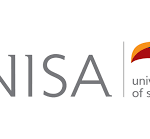Unisa PGCE Requirements: Your Guide To Qualifying For Postgraduate Certificate In Education The Postgraduate Certificate…
Understanding the APS Score System at UNISA: Requirements and Implications
Understanding The APS Score System At UNISA: Requirements And Implications
The Academic Performance System (APS) at UNISA is a novel and forward-thinking method that evaluates the academic accomplishments of students. It is a computerized system that uses the use of artificial intelligence to evaluate the academic accomplishment of pupils and provide feedback on how they are progressing as individuals. Because of the user-friendliness and efficiency of the system, which has both been built into the system, students will have an easier time keeping track of their progress and receiving feedback in real-time. This is because user-friendliness and efficiency have both been constructed into the system.
UNISA is in a position to ensure that all of its students are receiving an education of the best possible caliber as well as the necessary support to thrive in their academic endeavors because of the implementation of the APS system.
In this post, we will discuss with you the APS system at UNISA, as well as how to establish your APS score at UNISA, the range of possible APS scores, and other closed subjects. We will also discuss with you how to determine your APS score at UNISA.
UNISA’s Admission Points Score (APS) Explained: What It Is and How It Works
At Unisa, your eligibility for undergraduate study is determined by your Admission Point Score (APS). Put your best foot forward; it’s a required section of the application!
The aptitude placement score (APS) is used to determine whether or not an applicant should be admitted to a program. In addition to English, the applicant must take four required disciplines and one elective. The APS is used to assess if prospective students at Unisa meet the basic standards for admission.
A good APS score increases your chances of being accepted to Unisa, thus it’s worth working hard to achieve.
If you’re applying to a school or course that requires a certain GPA or APS score, then you’ll want to make sure you have one. It’s a great way to set yourself apart from the competition.
If you want to attend Unisa, you need to aim for a high APS score.
The higher your score, the greater your chances of getting into the major of your choice at the institution, which follows a merit-based admissions system.
Calculating Your UNISA Admission Points Score (APS): A Step-by-Step Guide
Are you interested in learning how APS is determined at UNISA? What follows is essential information.
Using the data instructions below, you can initiate the process of determining your UNISA APS.
You must submit a list of your top six subjects to UNISA, which must include any required courses for your chosen major.
Apply the UNISA APS table for scoring. If you get an A in English (Home Language) and a C in Mathematics, you get 4 and 7, respectively. Topics are graded on a scale from 1 to 7.
Each subject’s final grade might be anywhere from 0% to 100%.
Grades range from 1 to 7, with 7 being the highest possible and 1 the lowest. You can get a point score based on your Math grades. A score of 45%, for instance, would translate to a 3.
You can calculate your overall point total by adding the average percentage scores (APS) from your top five or six courses.
UNISA Programs You Can Apply to with a 15 APS Score
There is a strong correlation between APS and both acceptance to and choice of major at UNISA.
The goal of the APS is admission to UNISA and enrollment in the desired major or minor.
It may be difficult for a candidate with a low APS to gain admission to UNISA.
If your APS is 15 or higher, you are eligible to submit an application to enroll in any Higher Certificate program. You could enroll in an ICB or NATED course, or get your Higher Certificate from a university.
A minimum APS score of 15 is required for admission to UNISA in the disciplines of Education, Social Science, and Arts & Culture. This amount of time would get you a Bachelor of Arts in Communication Science or a Bachelor of Education in Foundation Phase Teaching.
UNISA is a great university that offers lots of different courses to choose from! Whatever field of study you’re interested in, you’ll be sure to find something that suits you. If your admission point score is lower, don’t worry! You can still find a course that’s suited to your interests and abilities.
It is known that most courses available for applicants with low APS scores are higher certificate courses.
Here are some of the list of courses one can study at UNISA with a low APS
- Higher Certificate in Accounting Sciences
- Higher Certificate in Banking Services
- Higher Certificate in Business Management
- Higher Certificate in Economic and Management Sciences
- Higher Certificate in Human Resource Management
- Higher Certificate in Law
- Higher Certificate in Marketing
- Higher Certificate in Public Administration and Management
- Higher Certificate in Tourism Management
- Diploma in Accounting Sciences
- Diploma in Human Resource Management
- Diploma in Logistics Management
- Diploma in Marketing Management
- Diploma in Public Administration
- Bachelor of Commerce in Human Resource Management
- Bachelor of Commerce in Law
- Bachelor of Commerce in Marketing Management
- Bachelor of Commerce in Supply Chain and Operations Management
- Bachelor of Administration in Public Administration
- Bachelor of Arts in Environmental Management.






